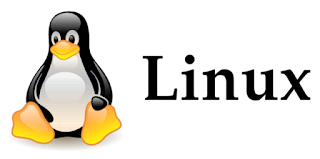What comes to your mind after hearing the word Linux? Something that a hacker or programmer is involved in? Maybe some people think so because indeed Linux is very closely related to things that smell of IT.
Then what is actually Linux? In this article we will understand about the meaning of Linux, various Linux distributions, and what are the uses of Linux.
Is that Linux?
Quoted from the Wikipedia, GNU / Linux page or commonly called Linux is one of the computer operating systems that come from the Unix family. Unlike other operating systems such as Windows and Mac OS X, Linux is open source and was developed with a model of mutual cooperation development. Starting from the operating system and most applications are made by volunteers, communities, and organizations from all over the world.
In terms of usage, Linux can be installed on desktop computers like an operating system like Windows. Besides being used for desktop computers, Linux is also widely used as a server. In addition, Linux is also used in console games (PlayStation, XBOX), mobile phones (Android), routers, and many more.
Linux is distributed under the GNU General Public License, which is a license where the program owner retains the copyright, but others are allowed to modify, distribute or even resell the program provided that the original source code must be included in the distribution.
Linux is actually just a kernel. What is the kernel? the simple meaning is something that bridges between software and computer hardware. The Linux kernel was written by Linus Torvalds in 1991 and distributed it on the internet freely for further development by programmers from all over the world.
The Origin of Linux Naming
The name Linux comes from the name of the author, namely Linus Torvalds. At that time he was still a student at the University of Helsinki. The name Linux itself was chosen because of the combination of Linus and Minix (a Unix type system), so as to produce the name Linux.
Today many consider Linux an operating system, it is actually wrong. Linux is just a kernel, without software, Linux cannot be called an operating system. If we want to call it an operating system, we must call it the GNU / Linux operating system.
Linux contributes to the kernel, while GNU contributes to software and applications. So that it becomes an integrated operating system and is referred to as GNU / Linux. Because people find it hard to call it GNU / Linux, many people abbreviate it as Linux.
The Logo
The Linux logo (Tux) began when Linux Torvalds was walking in a park called Perth. Then he was pegged by a penguin, which caused Linus Torvalds to fever for days.
He thinks that the penguin character is suitable to be used as the logo of the new operating system. So a competition was designed to design a new Linux logo, and the competition was finally won by Larry Ewing who described a penguin sitting.
Various Linux distributions
Linux distributions or commonly referred to as Linux distributions are operating system packages that contain the Linux kernel and software managed by the distribution developer itself. The developers package the Linux kernel with open source applications such as Office Programs, Media Player, Desktop Environment, etc. so that it becomes an intact operating system.
How many Linux distributions are there now? very much, and the exact number is unknown. This is because many individuals or organizations around the world develop Linux distributions for various needs. You can also create your own version of the Linux operating system.
Of the many Linux distributions that exist today, here are some examples of which are very famous and widely used today.
Examples of Linux distributions:
- Debian
- Ubuntu
- OpenSUSE
- Fedora
- Mandriva
- BackTrack
- Manjaro
- Mint
- Xandros
- Knoppix
- Sabayon
- CentOS
- Red Hat
- ClearOS
What Linux distributions are suitable for beginners?
If you are interested in trying out the Linux operating system, or even want to migrate to Linux, you can use Ubuntu Linux, or its variants (Kubuntu, Edubuntu, Lubuntu, Xubuntu, Linux Mint, etc.).
The reason is that besides the user friendly distribution, Ubuntu has a complete application program to support daily work. If you are proficient, you are free to try other Linux distributions.
First of all our introduction to what is Linux, hopefully this article can be useful for all readers.
Source : www.konyoha.com
Source : www.konyoha.com


Komentar
Posting Komentar